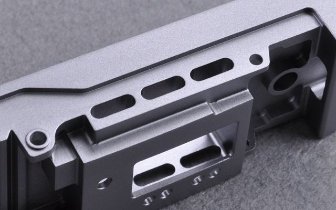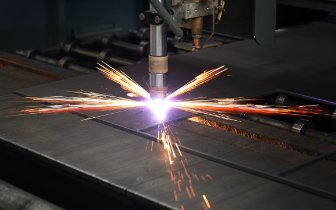Die casting uses a two-part, tool-steel cavity to create a negative shape of the required component. This “hole” is then filled with molten metal which is chilled back to solid before the cavity is opened and the cast metal part removed. Die casting is often used in the production of low-cost light metal components with high precision and strength. This article will define die casting, the types, materials, where it is used, and its benefits.
What Is Die Casting?
Die casting is a process in which molten material is poured or forced into a mold cavity. This negative shape approach is identical in principle to all molding and casting processes, but it differs in almost every essential detail. The hardened tool-steel parts that form the cavity are pressed together by a hydraulic press, ensuring the closure faces meet precisely as a seal. Some parts require that the tool be heated at this point, while others form better with the cavity cold.
Why Is It Called Die Casting?
It is called die casting because a "die" is a variably defined word for "tool". Most other casting processes such as sand casting and investment casting destroy the cavity in making a single part. Die casting is unique in leaving the cavity undamaged by casting a part. The earliest use of "die" as a term likely relates to the stamping tools for coins, which forge the metal in a cavity to form a precise shape.
What Is the History of Die Casting?
Die casting originated with the casting of printer parts such as gears and bell cranks in the early/mid-19th century. The parts were simple: the tools were iron and coarsely made and the fill was hand poured from a ladle. The process developed over the 20th century to become a mainstay of high-volume metal component manufacture. Fully automated and complex production lines are now commonplace, although many of the more primitive origins of the process are still in meaningful commercial use—right through to hand ladle filling simple cavity tools.
How Is Die Casting Performed?
Die casting is performed by pressing the cavity together using a hydraulic press to ensure that the closure faces are sealed. Some tools are heated while others are left cold to create the part. Filling of the cavity with molten metal can be low pressure (gravity feed or gravity die-cast) or high pressure (pressure die-cast) using a hydraulic ram. Higher pressure allows finer features and thinner sections to fill effectively. Lower pressure requires lower-cost equipment and lighter tooling, but it is only suited to simpler profiles and thicker sections.
Fast processing tools for volume production are generally water-cooled, to speed solidification and reduce cycle times. However, cycle times are considerably longer than for the related plastic injection molding. The thermal capacity of metals is considerably higher, requiring bigger temperature reductions to reach an ejectable solid.
What Are the Different Types of Die Casting Processes?
The different types of die-casting processes are listed below:
1. Cold-Chamber Die Casting
Cold chamber die casting is used for higher melt-point metals like aluminum and lower-volume production. The injection chamber is charged and injected with molten metal. The chamber relies on the heat of the charge to make a stable processing temperature. This is a lower cost to set up and requires less maintenance but can produce more variability as the production rate stabilizes, leading to a good injection temperature in time.
2. Hot-Chamber Die Casting
A hot chamber or goose-neck casting is the more widely used process. It is better suited to higher volume but requires more system costs and more maintenance to preserve good production quality. The injection chamber is immersed in the molten bath it is fed from, maintaining charge temperature levels at the optimum for chamber fill.






